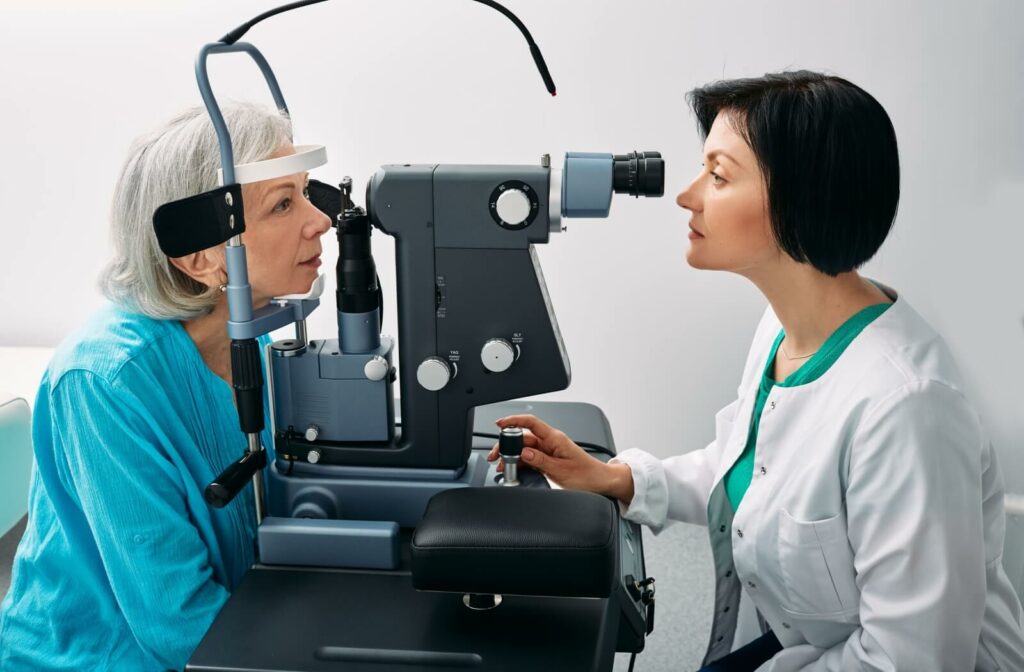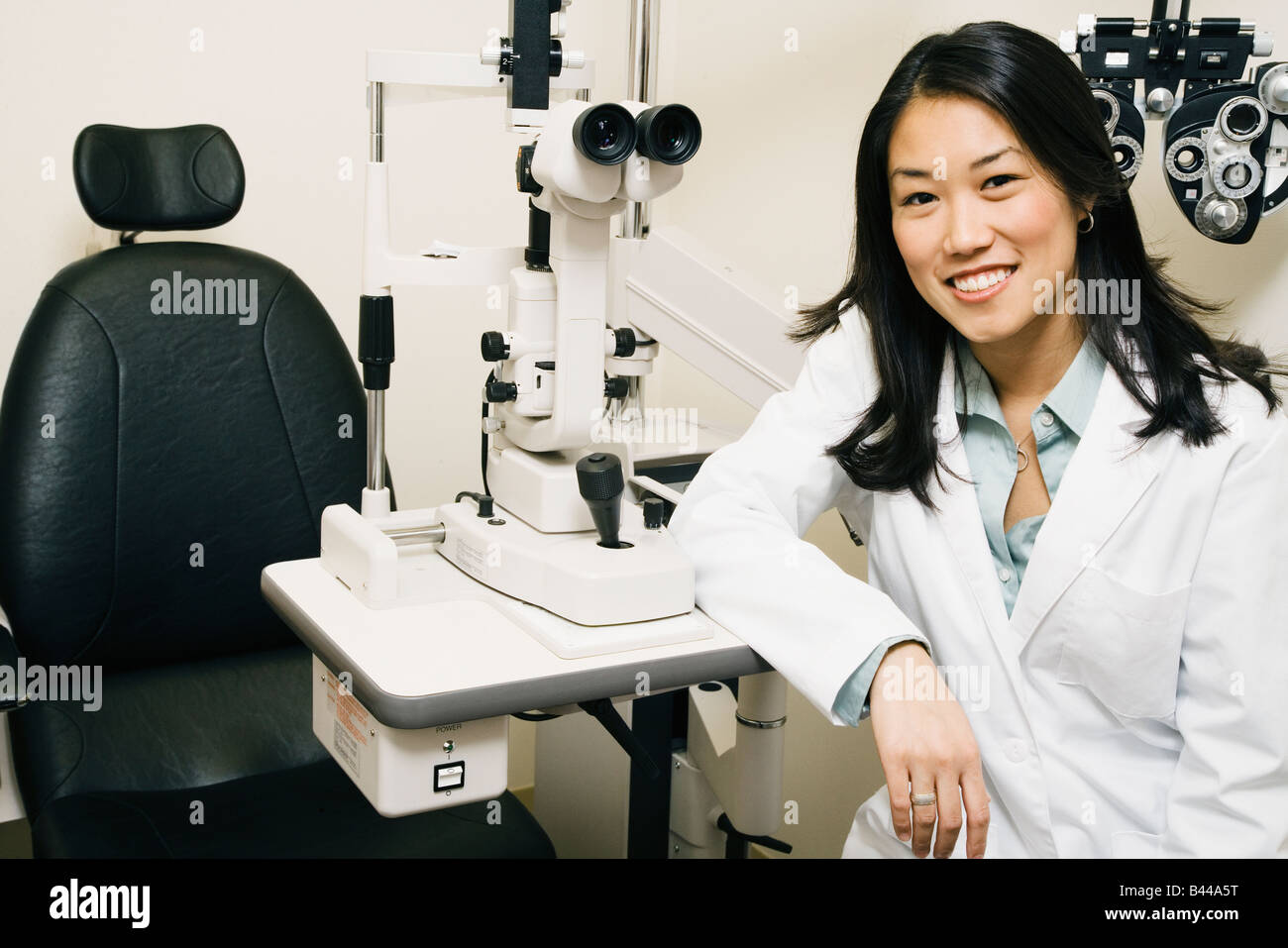How an Eye Doctor Can Change Your Vision Health in Chino
How an Eye Doctor Can Change Your Vision Health in Chino
Blog Article
Checking Out the current Technological Advancements in Optometry and What They Mean for Eye Doctors
In the ever-evolving field of optometry, current technical advancements are reshaping just how experts come close to eye care. From the precision of Optical Comprehensibility Tomography to the nuanced insights used by AI-driven diagnostic tools, these technologies are establishing new criteria in person analysis and therapy. Teleoptometry is poised to redefine ease of access, making sure that know-how transcends geographical constraints. As these improvements penetrate the practice, eye doctors are encountered with the obstacle of accepting these tools to enhance individual outcomes. The concern remains: just how will these technical shifts redefine the duties and responsibilities within the career?
Advancements in Diagnostic Devices
Progressing the field of optometry, innovations in analysis devices have actually reinvented the method eye care experts assess and identify ocular conditions and aesthetic impairments. The past years has seen considerable technological innovations, enabling even more accurate and detailed analyses. Optical Coherence Tomography (OCT), for instance, provides high-resolution cross-sectional photos of the retina, enabling the very early detection of conditions such as glaucoma and age-related macular degeneration. This non-invasive imaging technique has come to be crucial in contemporary optometric method.
Another trick development is the introduction of advanced corneal topography systems, which map the surface area curvature of the cornea with accuracy. These tools are specifically beneficial for suitable contact lenses and detecting corneal conditions. Electronic retinal imaging has actually changed traditional ophthalmoscopy, supplying detailed, breathtaking views of the retina that assist in detailed visual evaluations.
The development of wavefront aberrometry has actually likewise been essential, allowing the evaluation of refractive mistakes with unrivaled precision (Optometrist Chino). This innovation aids in customizing rehabilitative lenses and improving surgical end results for refractive surgical procedures. Jointly, these diagnostic advancements empower eye doctors to deliver superior individual care, making certain very early treatment and customized therapy techniques, ultimately enhancing visual health results
AI in Patient Management
Building on the foundation of cutting-edge diagnostic devices, the incorporation of fabricated intelligence (AI) in client management represents a transformative leap for optometry. AI systems are significantly utilized to boost performance, accuracy, and personalization in individual care. By analyzing vast quantities of data, AI can determine patterns and predict possible ocular problems, making it possible for eye doctors to tailor treatments better. This capability is important in managing persistent eye conditions such as glaucoma and diabetic retinopathy, where very early discovery and constant monitoring are vital.
Additionally, AI-driven platforms help with streamlined person interactions and administrative procedures. Automated scheduling, digital appointments, and personalized follow-up strategies not just boost client satisfaction yet additionally maximize time management for practitioners. These systems can triage individuals based upon the seriousness of their problems, ensuring that those in important need get timely attention.
Additionally, AI improves decision-making by providing eye doctors with evidence-based referrals and treatment paths. By incorporating information from electronic wellness records, AI tools use insights that notify medical choices, minimizing the threat of mistakes and improving person results. As AI proceeds to evolve, its function in patient administration will likely expand, improving the landscape of optometric care.
Advances in Retinal Imaging
In the world of optometry, retinal imaging has actually witnessed remarkable technological developments that are boosting analysis capabilities and patient care. Developments such as Optical Coherence Tomography (OCT) and fundus digital photography have changed exactly how eye doctors assess the retina and visualize. OCT, specifically, supplies high-resolution, cross-sectional photos of the retina, permitting the in-depth assessment of its layers. This ability is very useful for very early discovery and management of conditions like glaucoma, diabetic retinopathy, and age-related macular deterioration.
Enhanced imaging modalities like OCT angiography are further refining analysis precision. Optometrist Chino. Such improvements assist in the recognition of min retinal changes that can indicate disease progression.
In addition, improvements in man-made knowledge are augmenting retinal imaging by allowing computerized analysis of large datasets. These systems help optometrists in identifying patterns a measure of pathology, consequently boosting diagnostic accuracy and efficiency. Jointly, these advancements are transforming retinal imaging right into this page a foundation of contemporary eye care, look at here now boosting results and broadening healing possibilities.
Teleoptometry's Growing Function
Teleoptometry is significantly ending up being a vital part of eye treatment, driven by developments in digital communication and diagnostic devices. As optometry welcomes electronic makeover, teleoptometry helps with remote consultations, enabling eye doctors to extend their services past conventional boundaries. This is particularly beneficial in underserved and rural areas where access to specialized eye care is typically limited. By leveraging high-resolution video clip conferencing and advanced retinal imaging, eye doctors can conduct thorough eye examinations from afar, guaranteeing timely diagnosis and treatment.
The combination of artificial intelligence (AI) further boosts teleoptometry, enabling the evaluation of visual data and aiding in the discovery of eye problems such as glaucoma and diabetic retinopathy. AI-powered algorithms can rapidly analyze complicated imaging information, supplying optometrists with beneficial insights that reinforce clinical decision-making.
Moreover, teleoptometry supports connection of care via seamless combination with digital wellness records (EHRs), enabling eye doctors to keep comprehensive individual histories. When consulting with different practitioners., this ensures that people receive tailored and consistent care also.
Despite these benefits, difficulties stay, including ensuring data protection and managing individual expectations. Teleoptometry stands for a considerable stride in the direction of more accessible, efficient, and patient-centered eye treatment. As technology advances, its function is positioned to increase even more.

Future Patterns in Eye Treatment
A myriad of innovative fads is established to improve the future of eye treatment, driven by technological developments and the advancing needs of patients. One considerable fad is the integration of fabricated intelligence (AI) in diagnostics, which promises to improve the precision and efficiency of eye evaluations. his comment is here AI formulas can analyze huge quantities of information from retinal pictures, potentially finding problems like diabetic retinopathy and glaucoma earlier than traditional approaches.
In addition, personalized medicine is getting traction in optometry, with hereditary testing educating personalized treatment plans. This strategy intends to maximize patient end results by tailoring interventions to individual hereditary profiles. Wearable innovation, such as clever call lenses, is also coming up, supplying real-time surveillance of intraocular stress or sugar degrees, therefore giving continuous understandings right into ocular and systemic health.
The adoption of augmented fact (AR) and digital truth (VR) in training and individual education is one more emerging pattern. These innovations use immersive experiences that can improve understanding and abilities both for patients and eye doctors. As these fads evolve, eye doctors should remain abreast of technological advancements to supply sophisticated treatment, ensuring enhanced client end results and contentment in the vibrant landscape of eye treatment.
Final Thought

Jointly, these analysis developments encourage eye doctors to deliver superior patient care, guaranteeing very early intervention and tailored treatment techniques, ultimately improving aesthetic health outcomes.

As these innovations proceed to advance, eye doctors must adapt and incorporate them right into technique, inevitably optimizing operations effectiveness and elevating the criterion of eye care supplied to clients.
Report this page